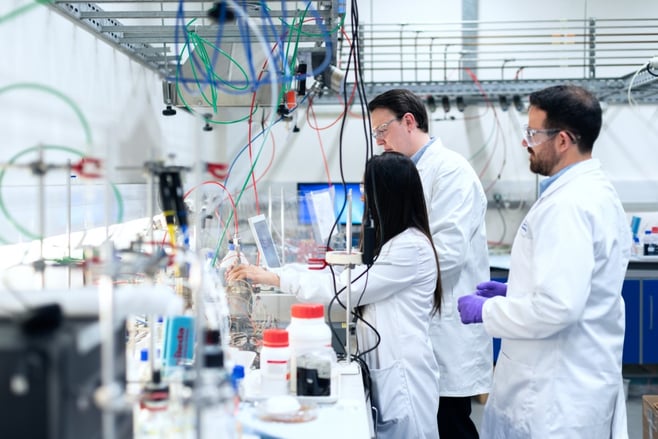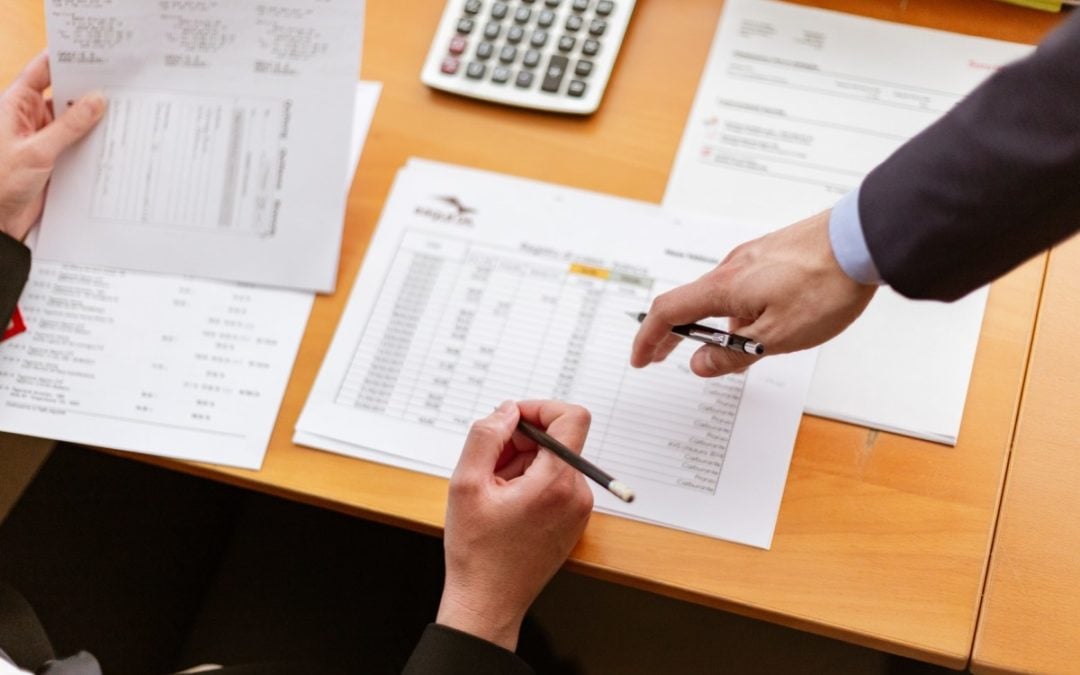Don’t worry; you’re not alone if you don’t know what the R&D tax credit is. It stands for research and development, and it helps businesses of all sizes save money on taxes and lower their tax liabilities.
Think you need to own a large company and have workers in lab coats to qualify? Think again. Research and development, as it applies to the credit, can encompass many things. And there’s a good chance your company qualifies.
Unfortunately though, many new and even established businesses don’t even attempt to claim the research and development tax credit because they think (erroneously) they don’t qualify. Or they aren’t even aware of its existence. That’s what we aim to dispel.
Whether you own a small business, startup, or head a multi-million dollar company with hundreds of employees, you’ll want to know how this credit is calculated, if you qualify, and how much you can save in any given tax year.
Speak to us today to learn more about R&D tax credit calculation.
Without further delay, let’s dive into R&D tax credits.
Two R&D Tax Credit Calculations to Know
Good news — you don’t need to work in computer science or conduct complex research and experiments to claim and receive the tax credit. True, innovation is something that is used for credit calculation. But innovation can mean many things that would apply to qualifying for the research tax credit.
First, let’s explore the two main methods used to calculate the research and development tax credit:
- The traditional method
- Alternative simplified credit method
Although your business doesn’t have to be in the science field, you will only be able to qualify for this tax credit if you spend time and money on developing, optimizing, and creating products in the US.
There are a few ways to tell if your business qualifies, and before you file your taxes you should see if you do so you can lower your tax burden.
In some instances, the money you save with R&D tax credits can be substantial. For some of our clients, they’ve saved in excess of six figures with these tax credits.
How is the R&D Tax Credit Calculated?
You’ll have to keep a close eye on your qualified research expenditures to accurately calculate the base amount. Calculating the R&D base amount is complex, and you’ll need the help of an experienced tax specialist to get an accurate number.
In a lot of cases, your average accountant will not have experience with R&D tax credits. If you were to rely solely on an accountant, you may be missing out on some serious savings for your business through this credit scheme.
At C&A, our goal is to help companies of all sizes and industries save the most money on their taxes and invest it back into their businesses. We offer a free, no-pressure consultation on R&D tax credits and how to lower your tax liability.
If you want to get an idea of how much you can save with this tax credit, we also offer a free assessment to help you calculate the R&D tax credit.
You’ll need your average annual gross receipts, the taxable year, and some help from your accountant to figure out your income tax liability, payroll tax liability, and qualified r&d expenses.

The Two Calculation Methods Allowed
There are two main ways to calculate the R&D tax credit and both are complex. When you work with our tax specialists, we’ll figure out which method is best for your company and help you claim this tax credit for the most money possible.
If your accountant is not familiar with obtaining R&D tax credits for your business, reach out to us asap so we can get the ball rolling.
Next up, we’ll explain how the two calculation methods work.
Traditional Method
This method allows you to get 20% of the research expenses for the current year over the base amount. You’ll need to know what the fixed-base percentage for the company is and information on your companies annual gross receipts.
To use the traditional method, you will need to ensure you have all of your receipts and paperwork filled out or it can be impossible to figure out the calculations. Bookwork will have to be your top priority and our tax consultants will be glad to assist.
If your business has never claimed this tax credit before or you don’t have all of the information, your tax consultant will recommend the second method to figure out the percentage.
Alternative Simplified Credit method
This may be easier for most qualified small businesses that have never claimed this tax credit before and can be easier to figure out the correct amount. There are four steps your tax consultant team will use to ensure the amount you claim is accurate and the largest number possible for your business:
- Understand Expenses — We’ll determine your QRE or qualified research expenses are for the past three years. We’ll need an accurate log of all the money your company has gone through to develop new products or new procedures. Without this information, you won’t be able to claim the tax credit.
- Multiply the Number — Once we get the total for your research expenses, we’ll multiply the number by 50%.
- Subtract the Result — Once we determine the total, we’ll take that number and subtract it from the current year’s QRE.
- Final Results — We’ll get the total credit by multiplying step 3 by 14%.
No matter which version you choose, there are multiple complicated steps that may not make much sense to you. What you need to focus on is recording all of your expenses and providing accurate information to your team of tax specialists at C&A.
A Simple Guide to the R&D Tax Credit
Determining who can claim this tax credit doesn’t have to be hard. Calculating the amount will is usually the most complicated step. But that’s what we’re here for. Many small businesses and even larger companies shy away from claiming this tax credit because of the complicated forms needed to file taxes and get the credit.
If you own a business, you can claim this tax credit retroactively — usually within the past three years — though sometimes longer. We highly recommend working with someone who has experience filing R&D tax credits.
Are you still unsure if you can file a tax claim? Here are four ways to determine if you can file a claim.
Know for Certain
If your company has made tons of cosmetic changes to products, technically, cosmetic changes alone won’t qualify for the credit.
You’ll have to spend a significant amount of time researching how to change your product and innovating ways to revise and develop it. Then you will need to ensure you have saved all of the research and money spent on the project.
The research must have been done to improve a product or process beyond aesthetics. Quality control, market research, manufacturing, systematic trial, and increasing research activities can all be ways to take advantage of this federal research credit.
Process of Experimentation
To file for this tax claim, you must prove you experimented with the products. So, if you redeveloped a project but did not experiment, you might not qualify. Experimenting will help you solve any technical uncertainty in a product.
Technology
Even if your company is not science-based, the product must be technological in nature. The research needs to rely on chemistry, engineering, physics, or one of the other hard sciences.
The Purpose Has to Qualify
If you’ve created a new product for looks rather than an actual purpose, it may not qualify. This must only be for those who created a new product that has increased function over the old product or improved an old product to be more reliable and higher performing.
Whatever your company does, if the product you improved hits these four categories, you’ll want to talk to us. You’ll be able to claim the R&D tax credit and it may help you save an enormous amount of money during the tax season.
There are a few other things we want you to know about when claiming R&D tax credits.
What is Form 6765?
There are so many forms you will need to fill out as a small business owner. It can be hard to keep them straight. Having a reliable bookkeeper and accountant can be very beneficial to your business and saving money come tax time. You need a full team that can help you stay organized and understand your money flow and what tax credits your company might be able to claim.
When you learn about R&D tax credit you will also learn of a form called 6765. The form 6765 is used to figure out and claim the credit for research activities.
It’s a bit complicated and full of legal jargon. But we’re experienced with how the form works and how to fill it out to your advantage so you can claim the full amount.
This form is due every April 15th and you may be able to collect up to $250,000 for eligible small businesses. This is a tax incentive that is worth looking into, especially if you are concerned that you might experience a tax hike.
Simple Instructions for Form 6765
On the tax form, you’ll see what products qualify and what a small business means. If you are not a small business, you’ll need a different form from the IRS.
On the form, you will see four basic parts, A, B, C, and D.
In section A, you will be able to fill out a claim for the regular research credit option. Or in section B, you can choose simplified alternative credit.
If you do enough research on the IRS website, they will inform you to use both methods to find out your tax calculation and then fill out the rest of the form with whatever method gets you the most credit. This is why it can be important to work with a good company that will do the work for you.
If you choose section A the regular or traditional claim, it will come with eight lines that need to be filled out. You will need to fill this form out meticulously; if you miss any parts, it may disqualify your claim. Section A is 20% of the taxpayer’s current year QRE.
If you choose section B, the alternative simplified credit method will allow you to be a bit more flexible as a business. This version allows a business to claim the tax credit even if their expenses don’t meet the traditional method limit. Once you fill it out, you can attach it to your main tax return for the year.
Once you fill out the first part of the form, either part A or B, you will hit part C. This section will allow you to report other information like schedules and business structure. Most taxpayers can ignore this section, but your account may ask for additional information.
Part D is only for businesses that make payroll tax elections. If this doesn’t apply to your company, you’ll skip this section.
When you work with us, we’ll ensure that your form is filled out completely, accurately, and is sent in on time.
What Expenses Can be Used?
So, you’ll want to know what expenses can be used to calculate the R&D credit for your company. It’s actually more than you may think, and that’s why more businesses should try to fill out form 6765.
It’s a tedious process, but it is worth the time spent collecting information, and it could earn you a large chunk of money. The qualified research expenses include:
Supplies Used
If you used a significant amount of supplies during this project, you need to have all of the receipts for it. Even if you consumed many supplies, you would need to have reports and information stating how much.
Wages Paid
A business may have paid a few employees to be testing and redeveloping the products. That’s okay and can be a qualified expense when filling out this form. If the employees directly supported the development process and you paid for it, be sure you share this information with our tax specialists and keep an accurate record.
Third-Party Participants
If your business paid for third-party testing or partnered with any third party to create or redesign a product, this expense needs to be recorded. If a third party also helped with research on a specific product, that counts.
Cloud Services
Some businesses may need to lease computers or other cloud services to aid research. If this is something you did during the development, it’ll be added to the research expenses.
Keep in mind that if you’re still in the middle of working on a project and have yet to create a successful product, that’s okay. You can still qualify. You don’t need to have a finished product or even a working product.
The point of this tax form is to create an incentive to make a reliable working product over time. The more you put into it, the more you get out of it in tax credits.
Summing it all up: Contact us to save the most money on your taxes
If you’ve been researching federal R&D tax credits and have found that most larger corporations file for this claim, why is that? For starters, they have a team of lawyers and accountants that can go through this meticulous process and get it done efficiently. However, that shouldn’t stop a business owner or any company in the US that does product development from claiming this tax credit.
If you make a product and continue to make advancements with the product, it’s time to reach out to someone familiar with the 6765 tax form to see if you are eligible. This is one way to have your qualified research activities offset your average gross receipts.
Remember to use our free assessment to see how much you can save on taxes with the R&D credit scheme. Reach out to us to schedule a free, no-obligation consultation and we’ll be happy to help you save money come tax time.





